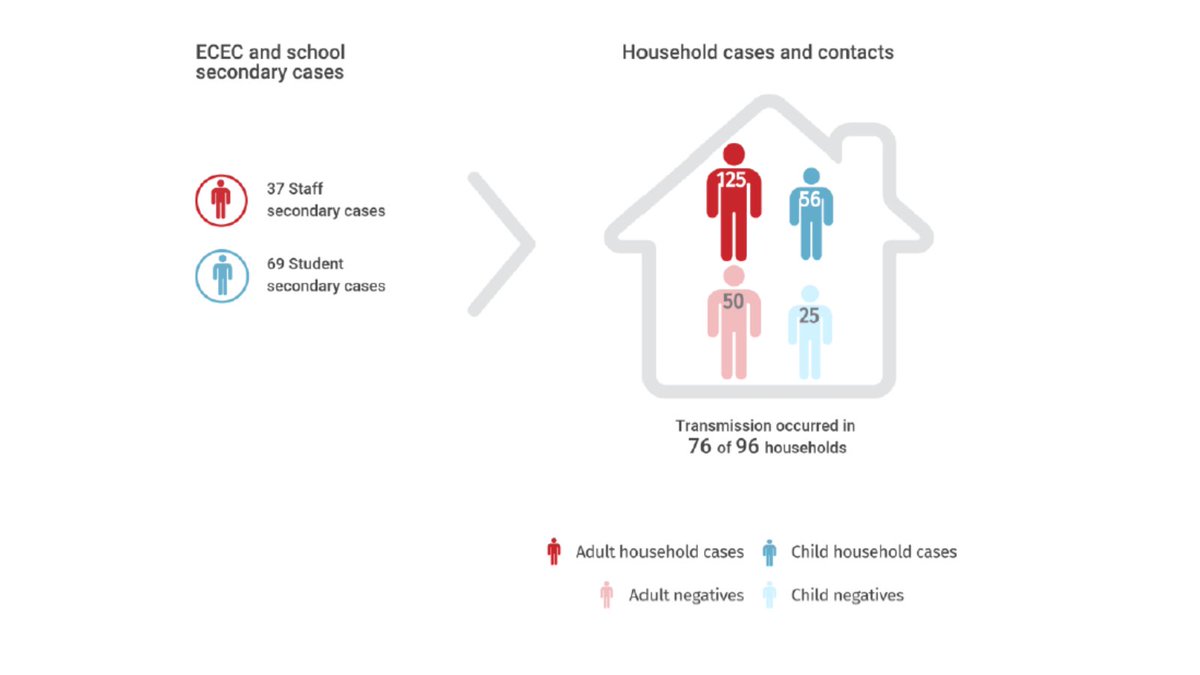
Amazing education settings outbreak data from the Delta #COVID19 outbreak in NSW 🇦🇺
Primary/Secondary schools mostly closed, so limited info to draw on (Attack rate v low, <2%)
BUT early years settings fully open with no masks!
What happened? 🧵
ncirs.org.au/covid-19-in-sc…
1/
Primary/Secondary schools mostly closed, so limited info to draw on (Attack rate v low, <2%)
BUT early years settings fully open with no masks!
What happened? 🧵
ncirs.org.au/covid-19-in-sc…
1/
There was secondary transmission in 16/32 settings
If the index was an adult, decent amounts of transmission - 17% AR to adults, only 8.1% to the kids
If the index was a child, minimal transmission - 1.3% to an adult, 1.8% to another child
Over 95% of contacts tested
2/
If the index was an adult, decent amounts of transmission - 17% AR to adults, only 8.1% to the kids
If the index was a child, minimal transmission - 1.3% to an adult, 1.8% to another child
Over 95% of contacts tested
2/

Once cases were back home, as you would expect with Delta, there was a lot of transmission
70% of all household contacts became infected
In 57% of households, everyone got infected (overdispersion in action)
3/
70% of all household contacts became infected
In 57% of households, everyone got infected (overdispersion in action)
3/

Take home messages:
- In early years settings, children have very low transmission risk (even with no masks) - vaccinating adults is key
- Household attack rates with Delta are very high (if someone in your house has it, assume you have it/will get it too)
4/
- In early years settings, children have very low transmission risk (even with no masks) - vaccinating adults is key
- Household attack rates with Delta are very high (if someone in your house has it, assume you have it/will get it too)
4/
Forgot to mention - this household transmission data is in the setting of very low rates of adult vaccination
We can safely assume these rates would be significantly lower with vaccinated household members
5/
We can safely assume these rates would be significantly lower with vaccinated household members
5/
Great coverage in @guardian of the study and input from some of the specialists involved in Australia
Hopefully reassuring for our Aussie friends during a difficult time in their pandemic
Note how studies often don't back up early anecdotes...
6/
theguardian.com/australia-news…
Hopefully reassuring for our Aussie friends during a difficult time in their pandemic
Note how studies often don't back up early anecdotes...
6/
theguardian.com/australia-news…
• • •
Missing some Tweet in this thread? You can try to
force a refresh







